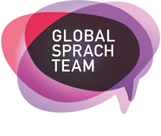A translation must never omit parts of the message…
Translating is not easy. When taking a text from one language to another, there is a whole lot that can go wrong. Keep reading to find out about four of the biggest traps you can fall into when translating.
- Clinging to the source text
A text that has been translated word for word sticks out like a sore thumb. When someone translating is scared of leaving out important details, they may be tempted to translate each and every word individually. The worst-case scenario is when translators stick to the word order of the source text, too.
If you’re lucky, the final result sounds a little awkward, but often, the translation ends up being unreadable. That is typically due to the varying structural aspects of different languages. When translating, it is important to make sure that the meaning of the source text is preserved while remembering that the result must be understandable.
- Turning your back on the source text
The other extreme trap when translating – compared to the previous point – is deviating substantially from the source text. While it is definitely important to distance yourself from the source material to a certain degree, the message of the text must remain intact.
It is not always easy, but there is almost always a good way to complete an appealing and well-written translation that still manages to relay the meaning of the source text. Ideally, you should be able to put the source text and the translation next to each other and not be able to tell which is which. At the same time, though, they should convey the same information.
- Forgetting about the target readership
When translating a text, it is safe to assume that the readers of the translation will be a different group than those reading the source text. As such, it is important to consider the conventions of the target language and the customs of the target readership when completing the translation.
For example, some readers would not be comfortable being addressed directly or informally. Another aspect to handle with care is examples. Sometimes, size comparisons and references which are crystal clear for speakers of the source language may be utterly meaningless for speakers of the target language.
- Not seeing the text for all the words
Sometimes, there are individual words that are so tricky to translate that you end up spending almost all of your time on them. This is particularly an issue for complex topics. However, even texts that appear simple can leave you stuck on certain words or phrases.
The problem that arises is that you mind end up forgetting that that one word is but a small part of the entire text. Even if you find the perfect translation for the most perplexing term, you cannot count on the rest of the text turning out well.
Translating is essentially writing. That’s why, above all, you have to make sure that the final product reads well.
Poor translations often happen because translators haven’t considered these aspects or maybe aren’t even aware that they are an issue. When you order a translation from GlobalSprachTeam, you can rest assured that our experienced translators fully understand these common problems and use their skill to maneuver around them.
(O.M. 2020)
What other possible translation difficulties come to mind? What’s the worst translation you’ve ever seen? Let us know on Twitter!




